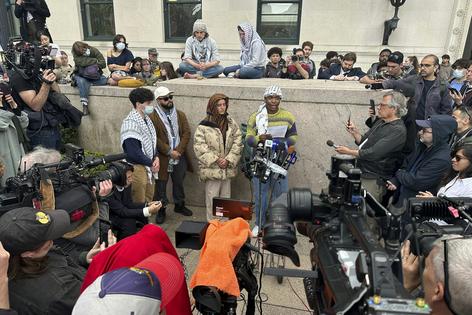Media coverage of campus protests tends to focus on the spectacle, rather than the substance
Published in Political News
Protest movements can look very different depending on where you stand, both literally and figuratively.
For protesters, demonstrations are usually the result of meticulous planning by advocacy groups and leaders aimed at getting a message out to a wider world or to specific institutional targets. To outside onlookers, however, protests can seem disorganized and disruptive, and it can be difficult to see the depth of the effort or their aims.
Take the pro-Palestinian protests that have sprung up at campuses across the United States in recent weeks. To the students taking part they are, in the words of one protester, “uplifting the voices of Gazans, of Palestinians facing genocide.” But to many people outside the universities, the focus has been on confrontations and arrests.
Where does this disconnect come from? Most people don’t participate in on-the-streets protests or experience any of the disruption that they cause. Rather they rely on the media to give a full picture of the protests.
For over a decade, my research has extensively explored trends in how the media shapes narratives around different kinds of demonstrations. Reporting on the campus encampments by large parts of the media fits a general pattern of protest coverage that focuses more on the drama of the disruption rather than the underlying reasons behind it – and that can leave audiences uninformed about the nuances of the protests and the movements behind them.
Protests – from small silent sit-ins and mass marches to the current student-led encampments – share similar components.
They require a degree of planning, focus on a perceived injustice and seek reforms or solutions. Protests also, by their very nature, engage in varying degrees of disruptive actions that exist in confrontation with something or someone, and utilize strategies that attract the attention of news media and others.
These core elements – grievances, demands, disruption, confrontation and spectacle – are present in nearly all protests.
But to the media, some elements are more newsworthy than others, with confrontation and spectacle often topping the list. As a result, these elements tend to be covered more often than others.
In research focusing on social movements like Black Lives Matter, the 2017 Women’s March and others, I have found that time and again, coverage tends to headline the parts of the protest that are sensational and disruptive.
...continued








Comments